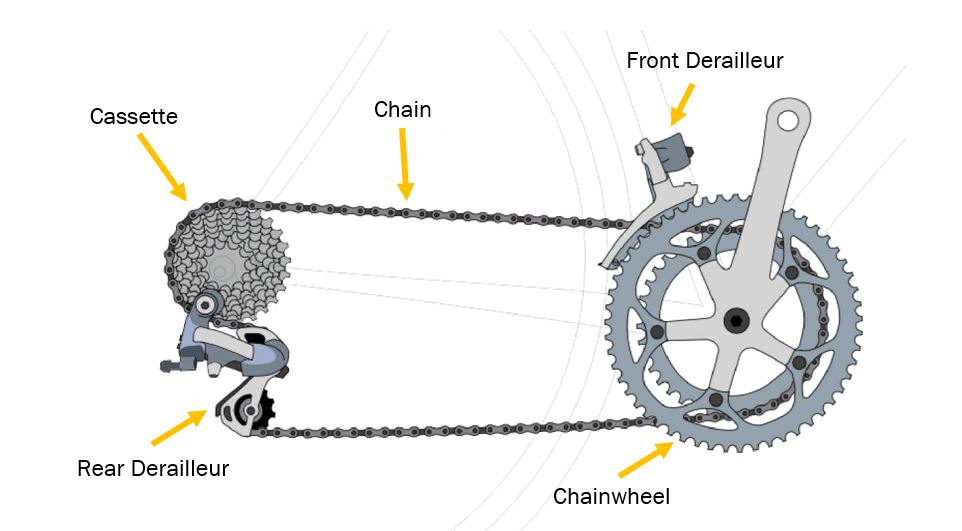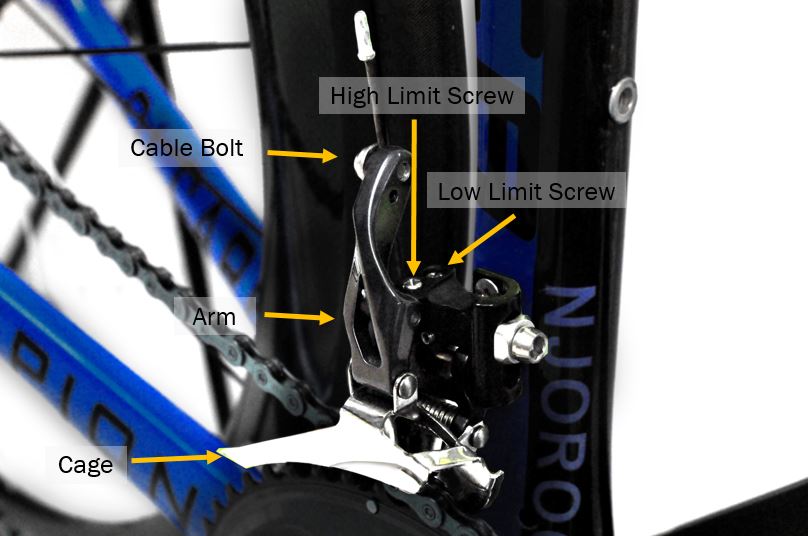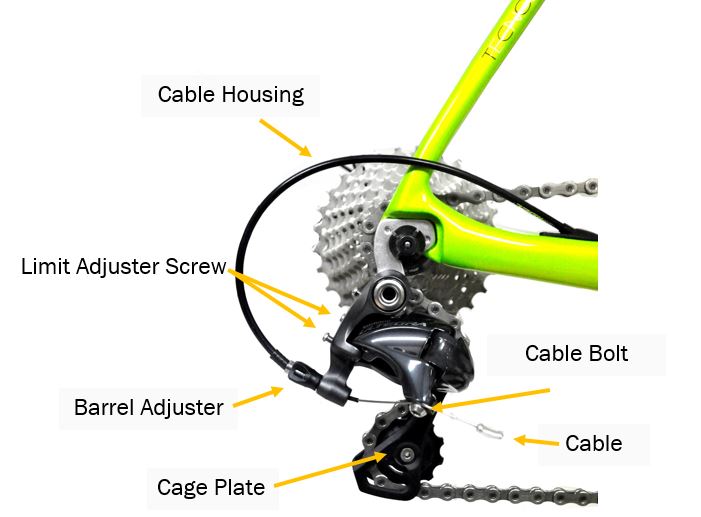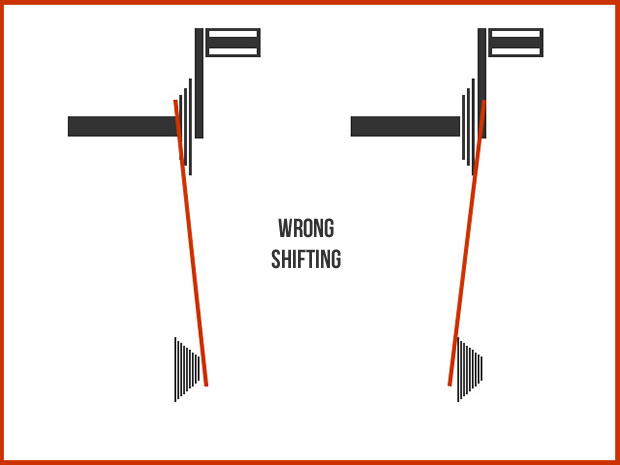 Bicycle gears allow riders to change their cadence to a comfortable pace and also tackle different types of terrain. The power from your pedal strokes goes into the front crank set, which then drives the rear cogs (gears) and wheel via the bicycle chain. Choosing the right gears at the front and the back will allow to to climb hills comfortably, and ride on flat roads and descend efficiently according to your pace and comfort.
Bicycle gears allow riders to change their cadence to a comfortable pace and also tackle different types of terrain. The power from your pedal strokes goes into the front crank set, which then drives the rear cogs (gears) and wheel via the bicycle chain. Choosing the right gears at the front and the back will allow to to climb hills comfortably, and ride on flat roads and descend efficiently according to your pace and comfort.
Modern bicycles come with plenty of different types of gear systems. Some have two to three large gears in front and anywhere from 7 to 11 smaller gears at the back. The number of teeth each gear has also comes in plenty of different combinations.
In order to learn how to shift gears efficiently, here are the parts of the group-set that allow shifting to happen. (It is essential to know these parts for fine-tuning)
Front Derailleur – Shifts the gears on the front chainwheel Rear Derailleur – Shifts the gears on the rear cassette
Rear Derailleur – Shifts the gears on the rear cassette
How Shifters work:
Gear shifters work under the tension of the cable that runs from the levers to the derailleur. When you push or pull (or twist) on the shifter levers, the ‘click’ sound heard is the indexing feature on the shifter. Each time the lever clicks, it has selected another gear.
Indexing means that the shift lever will not over shift (shift too much), or under shift the bike (shift too little). It has been calibrated to move the front or back derailleur just enough to the left or right to lift or drop the chain exactly one gear at a time. The chain is moved to different gears by the derailleur. The derailleur has large springs inside that apply tension to the cables. When you push or pull the shift levers, it tightens or relives tension on the spring, causing the chain to move up a gear or down a gear.
Over time and heavy use, this accuracy of indexing may deviate and hence will require some fine tuning. When shifting starts becoming rough, noisy or when the chain skips or exceeds the desired gear, it is time to fine tune and re-index the shifters.
Types of shifters
There are many different types of shifter levers that are suited for different types of riding.
Thumb shifters can be found on mountain and hybrid bikes. Shown above is a Microshift road thumb shifter (left) and a Tourney thumb shifter used on a mountain bike (right). They are easy to use especially on normal flat handlebars. Pushing either one of the levers/buttons will shift the chain up or down. Indicators like numbers (1-7) or alphabets ( L – H) also show which gear is selected.  Grip shifters are more compact as there are no extra levers or buttons required to shift. Grip shifts make use of your wrist and a twist action to increase or drop to a different gear. These grip shifts will include markings or an indicator to display the gear that corresponds to each twist. Grip shifts are commonly used on mountain bikes as shifting is easier and reactive.
Grip shifters are more compact as there are no extra levers or buttons required to shift. Grip shifts make use of your wrist and a twist action to increase or drop to a different gear. These grip shifts will include markings or an indicator to display the gear that corresponds to each twist. Grip shifts are commonly used on mountain bikes as shifting is easier and reactive.
For gripshifts, an indexed grip shift will make a ‘click’ sound when it is twisted. Non-index grip shifts will simply twist all the way until you physically feel the derailleur shift the chain to a different gear. Commonly found on road bikes, the shifter levers are integrated with the brake levers and are mounted on drop handlebars. By pushing different paddles, these shifters allows the rider to shift even when he holds different hand positions on the bars.
Commonly found on road bikes, the shifter levers are integrated with the brake levers and are mounted on drop handlebars. By pushing different paddles, these shifters allows the rider to shift even when he holds different hand positions on the bars.
Choosing the correct gear
The left shifter will control the front chainwheel and the right shifter will control the gearing on the back. Choosing a bigger front chain-ring will make pedaling harder. A smaller front chain-ring will make pedaling easier. On the other hand, a bigger gear/cog at the back will make pedaling easier, whereas a smaller gear at the back will make pedaling harder.
Changing the gears at the back eases your pedaling effort incrementally. Changing gears in the front chain-rings will result in a more noticeable change—pedaling feels easier in a smaller chain-ring and harder in a bigger one. 
For: Uphills and climbing
– Use a small or middle front chain-ring + bigger rear cogs for an easier effort uphill
For: Fast speeds or downhills
– Use a large front chain-ring + a range of rear cogs to hold speed better.
For: Flat terrain and easy pace
– Use a small or middle front chain-ring + smaller rear cogs to pedal at a comfortable and easy pace.
As much as possible, avoid crossing the chain. Chain crossing occurs when you pair the biggest front gear with the biggest rear gear and the smallest front gear with the smallest rear gear. Cross chaining places stress on the chain and may wear the gears faster.
Since gears work via cable tension that is activated by the shifters, when you change gears, try to relax your pedaling and avoid applying a great force on the pedal. This will not put so much stress on the gears and cables while shifting and will not cause any strain or damage.
After practice and several rides, changing your gears to set a comfortable pace and suit the terrain will come very easily. To determine the signs or sounds that indicate poor gear shifting that requires tuning, check out our how-to guide for gear tuning here.
